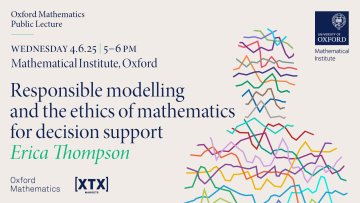Check out the RSL wellbeing calendar to find all the upcoming wellbeing events at the Radcliffe Science Library, including free ice cream, craft and chat, and the shredding of the worry box!
The Summer Graduate and Internship Fair 2025 is now taking place at the Maths Institute!
The fair, which takes place on Tuesday 10 June from 14:30, offers Oxford students, researchers, and alumni the chance to meet a diverse range of recruiters who are offering full-time jobs, internships, and other opportunities starting this summer, as well as vacancies that will be opening for the 2025-2026 intake.
More info at https://lnkd.in/dMiANf4W.
Over five years ago, when the wonderful Vicky Neale instigated and ran the Bulletin, your now self-appointed Song of the Week Editor suggested the odd song or poem to accompany the maths. Those suggestions don't appear in the full Song of the Week list (links now fixed), but to celebrate - or commiserate - Song of the Week at 5, here is the first ever suggestion.
Let Sandy Denny break your heart.
Alexandre Tsybakov (CREST, ENSAE, Institut Polytechnique de Paris and pictured) - Gradient-free stochastic optimization
3pm, June 6th, L1, Andrew Wiles Building
Full details plus a 'Distinguished Speaker' seminar on Bayesian Probabilistic Subnational Population Projections


